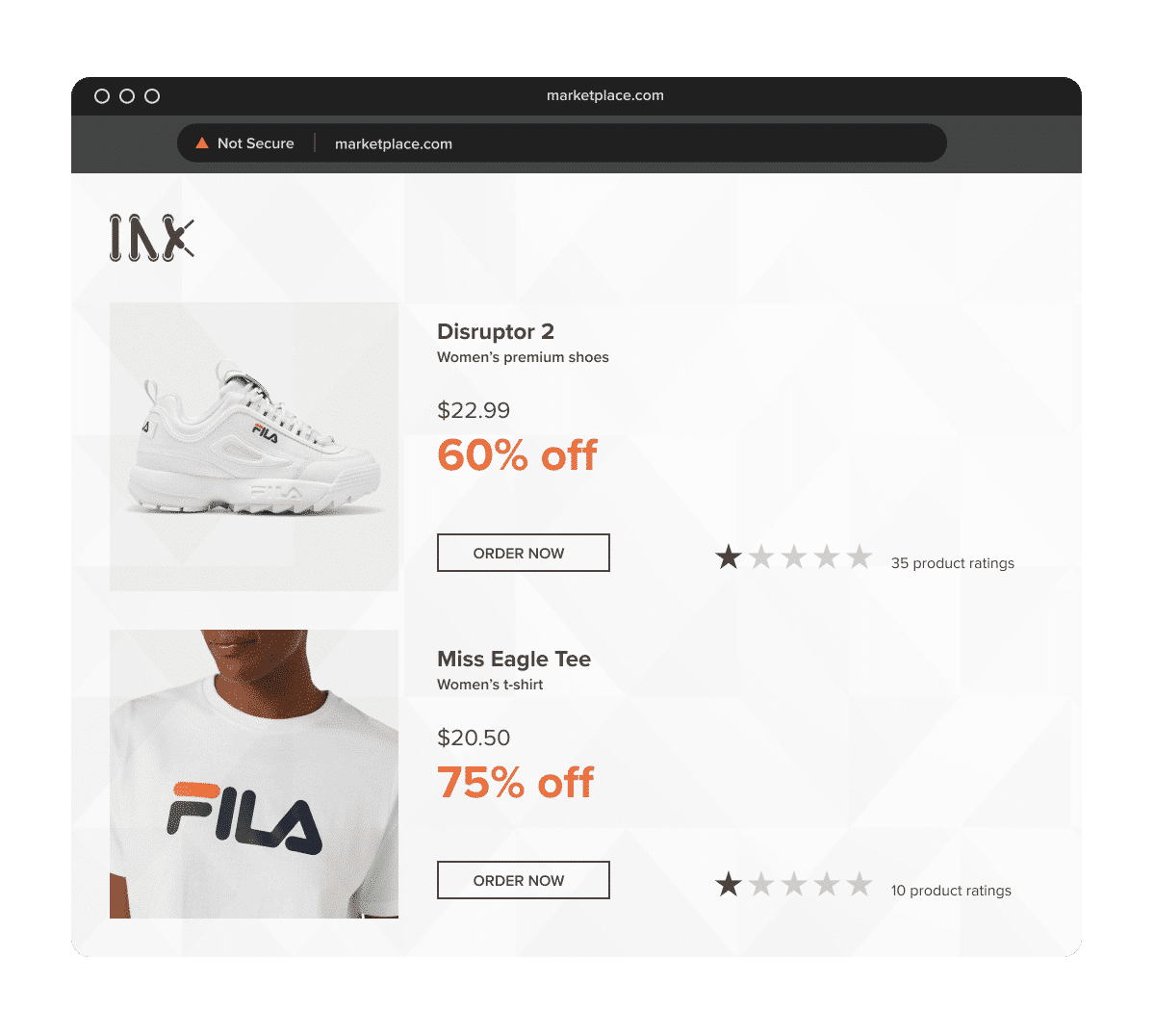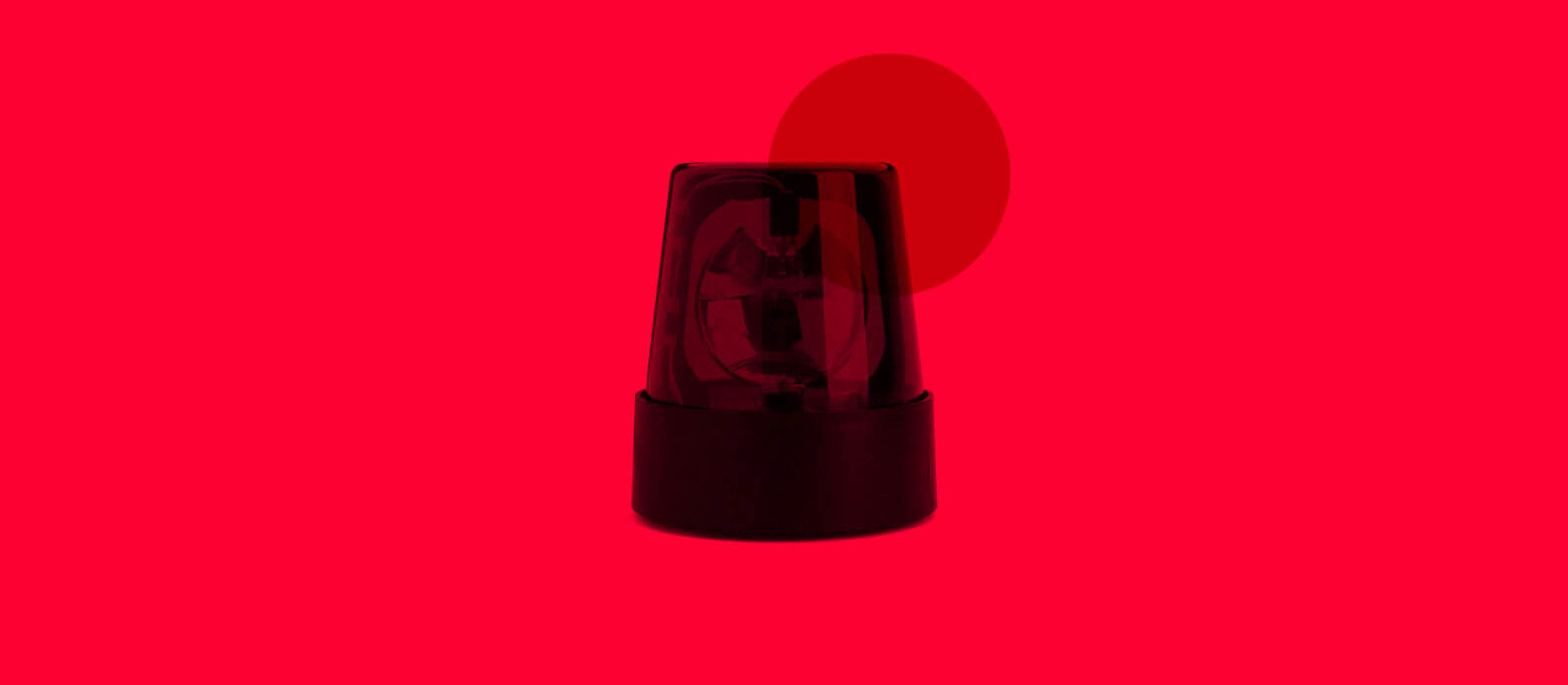As the rise of online marketplaces like Mercari continues to increase, so does the threat of the counterfeit products and fraudulent sellers that they attract. Unauthorized listings in marketplace platforms can severely damage a brand’s reputation, cut into its revenue, and have a negative impact on consumer trust and customer loyalty. And while Mercari provides tools for reporting counterfeit sellers, the process can be time-consuming and ineffective on a large scale. In this blog, we’ll guide you through how to report a seller on Mercari and explore the limitations of manual reporting. We’ll also introduce powerful solutions that help brands automate and scale their marketplace protection efforts, strengthening brand integrity and consumer confidence.
Scope of the problem
Unlike more tightly controlled marketplaces, the relative ease of listing on Mercari creates vulnerabilities in the platform. Counterfeiters can quickly upload fake goods without going through rigorous vetting processes. For brands, this means more time and effort needs to be spent policing the marketplace and fighting against illegal sellers.
And the risk isn’t limited to lost sales. Counterfeit products damage your brand’s reputation, as customers who unknowingly purchase fakes will associate poor quality or substandard performance with your brand. Counterfeit goods also drive price erosion, forcing legitimate sellers to compete with artificially low-priced counterfeits. In the eyes of consumers, this undermines revenue potential and devalues authentic goods.
With counterfeiters becoming increasingly sophisticated in mimicking real products, it’s important for brands to actively monitor marketplaces like Mercari and have an efficient system in place for reporting offenders. At Red Points, we protect 309 clients throughout 5 Mercari domains, giving us a deep understanding of the scale and complexity of counterfeiting on this platform.
How to identify counterfeit seller on Mercari
Identifying counterfeit listings on Mercari isn’t always straightforward, but there are several tell-tale signs that can help you pinpoint suspicious activity. Brands need to actively monitor these red flags across platforms. Many counterfeiters will also quickly change their tactics or relist products under new accounts, making it even more important to maintain a constant watch on marketplaces like Mercari.
Red flags to look out for include:
- Suspiciously low prices: Counterfeiters often undercut market prices to entice buyers. If a product is listed far below its typical retail value, this could be a sign it’s a fake.
- Poor quality or altered product images: Images that are blurry, heavily edited, or inconsistent with official product photos should raise red flags. Counterfeiters often use low-quality images to cover up the lack of authenticity.
- Vague or misleading product descriptions: Counterfeit sellers often provide vague details or misleading descriptions to evade detection. For example, they may miss out on key product specs or use ambiguous language to avoid outright claims of authenticity. Scammers may also use different deceptive wording to attract buyers like BNWT (Brand New With Tags) or Quality G5 (or any other numeric rating).
- Customer complaints or reviews: Take a look at the reviews. If past buyers have left feedback about receiving counterfeit or poor-quality goods, it’s a major indicator that the seller is not legitimate.
- Catalog pictures with generic naming: Counterfeiters might use authentic brand images but advertise them as generic products. For example, using a picture of Nike sneakers and labeling them as ‘White sneakers’.
How to report a seller on Mercari
If you’ve identified a counterfeit listing or seller, reporting them to Mercari is the next step. This is the process:
- Gather evidence: Before filing a report, make sure you’ve collected all the necessary evidence. This includes the counterfeit product listing, the seller’s profile, any relevant customer complaints, and screenshots of any important information (e.g. mismatched branding or altered images). The more comprehensive your evidence is, the stronger your case will be.
- Locate the listing: Navigate to the specific listing in question on Mercari. Click on the listing to open it and check that it’s still active. If the listing has been removed, it may already be under investigation or the seller may have withdrawn the item.
- Initiate the report: On the product page, click the three dots in the top right corner of the screen to open the options menu. Select the “Report” option to begin the process. You’ll be directed to a form where you can explain the issue.
- Choose the violation: When reporting a seller, it’s important to specify the type of violation they’ve committed. Mercari offers several categories, but for counterfeit goods, you’ll want to focus on options related to trademark infringement, intellectual property violations, or counterfeit sales.
- Provide details: In the description field, include as much relevant information as possible. This could include comparisons to authentic products, details about the infringement, and your supporting evidence (e.g. screenshots and links). Clear and concise descriptions help Mercari’s team process your report quickly and more effectively.
- Submit the report: Once all the required fields are completed, submit the report. Mercari will review the case, and while they don’t provide detailed updates, you can follow up if needed to make sure the report is being addressed.
What happens after reporting?
After you’ve submitted a report to Mercari, the platform’s trust and safety team will review the case. Their review process includes verifying the details of the report and checking the seller’s history for any prior violations. If the report is validated, Mercari may take one or more of the following actions:
- Remove the counterfeit listing.
- Issue a warning or temporary suspension to the seller.
- Permanently ban the seller from the platform if they are a repeat offender or the violation is severe.
It’s important to note that Mercari’s response times can vary depending on the volume of reports they receive and the complexity of the case. While some reports may be resolved in a matter of days, others may take longer, especially if more evidence or investigating is needed.
Limitations of manual reporting
Although Mercari has a straightforward way to report counterfeit sellers, manual reporting has its drawbacks. For brands dealing with a high volume of counterfeits or large-scale infringement, the process can be slow and inefficient. Typical limitations include:
- Response times: It may take days or weeks for Mercari to act on your report, during which time counterfeit goods can continue to be sold.
- Resource-intensive: Collecting evidence and submitting reports for every counterfeit listing is time-consuming, especially if your brand is targeted by multiple counterfeiters.
- Limited scalability: For larger brands or those with a high number of listings, manually reporting every counterfeit seller isn’t sustainable.
Brands facing these challenges need a more scalable and efficient solution to protect their products across multiple marketplaces.
Scaling brand protection with marketplace monitoring solutions
Instead of relying solely on manual reporting, brands can adopt automated marketplace protection solutions. Red Points offers an effective Marketplace Protection Solution that is designed to scale with your brand’s needs. This system automates the detection of counterfeit listings across platforms like Mercari, allowing you to proactively identify, monitor, and remove counterfeit goods before they cause further harm to your brand.
With a 95.2% enforcement success rate, we have taken down over 60,000 infringements from the platform, spanning over 28,000 sellers. The estimated value of potential revenue loss we have prevented for our clients is over $2 million. By taking advantage of AI-driven technology, Red Points ensures that your brand is protected at scale, detecting counterfeit listings in real time and removing them from multiple marketplaces without the need for manual intervention from your team. This frees up internal resources and provides brands with peace of mind, as they know their products are protected.
What’s next
Safeguarding your brand against counterfeiters on platforms like Mercari requires more than manual effort. While reporting individual sellers can be helpful, the scale and speed at which counterfeiters operate demands a more comprehensive approach. By using automated tools like Red Points, brands can strengthen their marketplace integrity and continue to build consumer trust.
Take control of your brand’s online presence and explore how Red Points can help you protect your reputation and revenue. Request a demo today to see how our Marketplace Protection Solution can improve your brand protection strategy.







